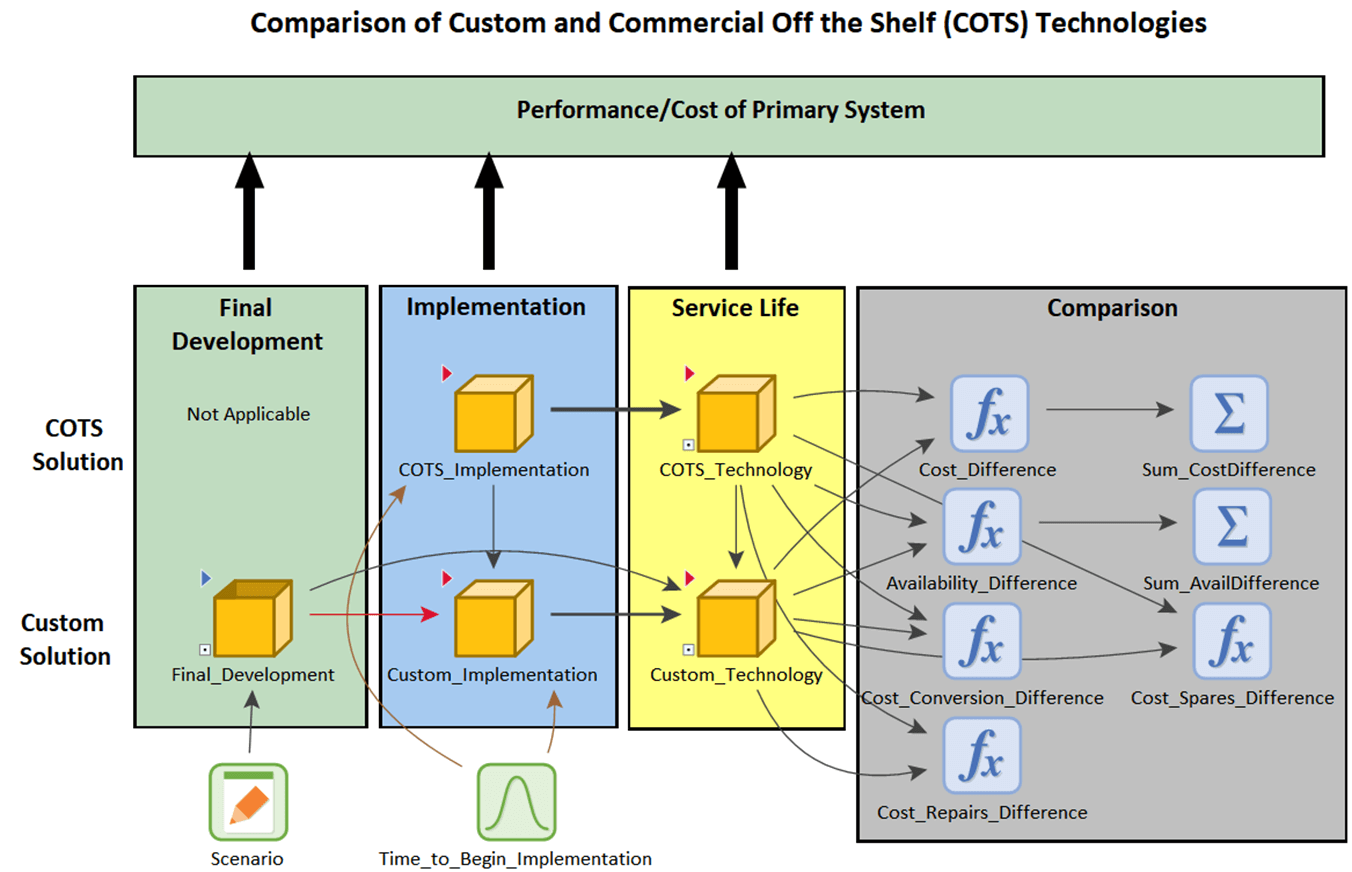Business Systems Applications
Strategic Planning
Using Simulation to Support Strategic Planning

Strategic planning typically involves development and evaluation of one or more alternative strategies to identify the approach that offers the greatest potential for success. When strategic planning is dependent on complex systems that are highly uncertain, even the most sophisticated strategic planners often conclude that the unknowns are insurmountable and end up making a decision based on intuition.
By combining the flexibility of a general-purpose and highly-graphical probabilistic simulation framework with specialized features to support financial modeling, GoldSim allows you to create quantitative and transparent business models to support your strategic planning efforts and make better decisions in the face of uncertainty.

Some of GoldSim’s key features that make this possible include the ability to:
- Incorporate variability and uncertainty. If your strategic planning efforts are challenged by lack of information regarding how your system operates or future conditions, GoldSim makes it easy to incorporate variability and uncertainty into your simulations.
- Represent random discrete events. In many strategic planning efforts, certain events or developments could completely change the outcome of certain strategic decisions. GoldSim has the capability to represent random discrete events, such as new technological advances, lawsuits, or natural disasters, that can play a critical role in determining which strategic approach is most effective.
- Build top-down hierarchical models. GoldSim allows you to construct hierarchical multi-layer models that represent greater detail at lower levels in the model structure. As a result, you can build, explore, and explain highly complex strategic planning models without losing sight of the big picture.
- Dynamically link to external data repositories. Strategic planning simulations should be based on current information. For large models with large amounts of input data, it can be labor-intensive and burdensome to enter data manually each time you want to update the model. GoldSim offers the ability to link to ERP and other database systems that represent the most recent information.
- Create easy-to-understand presentations that effectively communicate the structure of your model and the results. The best-designed strategic plans probably won’t be implemented if your audience doesn’t understand them. GoldSim’s user-friendly graphical interface provides you with the tools to communicate with and convince your audience.
Learn More
- Compare GoldSim to spreadsheet modeling approaches
Examples
Modules
White Papers
- GoldSim: Using Simulation to Move Beyond the Limitations of Spreadsheet Models
- Strategic Planning Applications Using GoldSim
